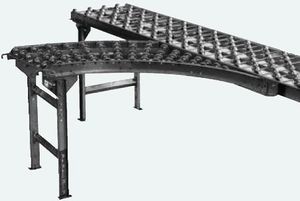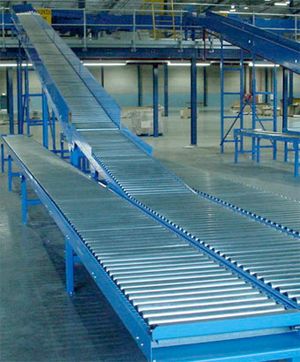Gravity Conveyors
Gravity Conveyors enable you to mechanise operations while keeping your expenses down. These cost effective conveyors effortlessly move items in almost any direction with minimal operating and maintenance costs. Gravity conveyors are useful in operations including work-in-process, shipping, receiving, and storage. Generally used in declining or manual push applications.
A gravity conveyor consists of two types, wheel or roller. Wheel Conveyors is constructed of a series of wheels mounted on a common axle supported in a channel frame. Roller Conveyors is constructed of metal tubes with bearings in each end and mounted on an axle supported in a channel frame. Roller axles are spring loaded so they can be moved to one side for easy removal or replacement of the roller in the frame. The spring also holds the roller in place. Product is transported directly on either wheels or rollers.
Most loads with a firm, flat bottom surface may be handled on gravity conveyor, either on a level push line or a gravity pitched line. Push lines require manual assistance to move the product along, where the slope is adjusted on pitched lines, allowing the natural force of gravity to move the product along, so that little or no assistance is required.
Gravity conveyors are available in a wide variety of sizes and materials, including steel for permanent installations and aluminum when portability is a requirement. Multiple standard widths, and lengths available manufactured to the inch provide flexibility for almost any situation. Because of their low cost and ease of installation, gravity conveyors are much more economical than other types of conveyor

